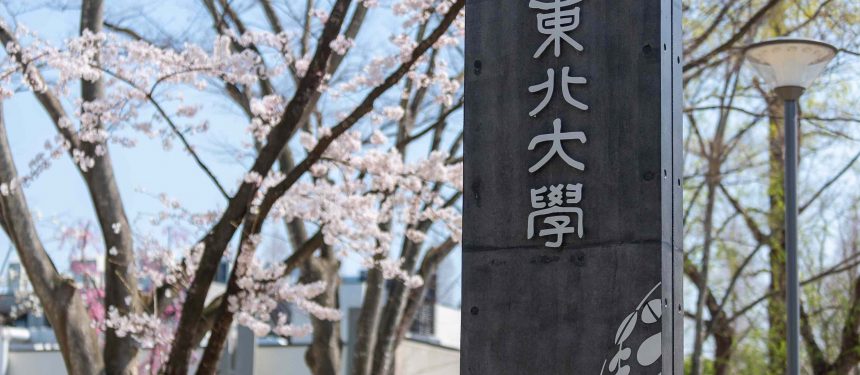Last year, Japan’s economy slipped below Germany’s to become the world’s fourth-largest economy, and prime minister Fumio Kishida warns that the country’s falling birthrate poses an “urgent risk” to society.
A rapidly shrinking youth population naturally results in falling numbers of domestic university applicants and fewer graduates entering Japan’s labour force.
“As a result, to be more competitive, Japan’s workforce must become more highly skilled and globally facing. Attracting foreign investment and creating an international labour market are part of the country’s economic plan.
“While the ability to achieve the goals set by Japan’s ambitious internationalisation policy may be questioned, the reality of what’s at stake is starkly evident,” says Anna Esaki-Smith cofounder of Education Rethink and author of Make College Your Superpower.
Though higher education in Japan has traditionally been closed off from the rest of the world, efforts to internationalise are not new.
Last year, prime minister Kishida reinvigorated the country’s three decades-long policy of internationalisation, announcing ambitious new targets to increase the number of international students in Japan to 400,000, and to send 500,000 Japanese students abroad by 2033.
Japan met its previous goal of 300,000 international students ahead of schedule in 2018, creating a degree of optimism about the country’s ability to internationalise, according to Esaki-Smith.
But numbers have been slow to recover since the pandemic when Japan kept its borders closed for one of the longest periods of any country.
-

Source: Japan Student Services Organization
In 2022, there were 231,150 international students in Japan, the country’s lowest enrolment since 2015, according to the Japan Student Services Organization.
Yet the character of Japanese internationalisation is different from commercial markets around the world.
“It’s not about recruiting people who pay money, it’s about soft power and it’s about internationalising the Japanese population, so it’s better prepared for the world,” says Simon Marginson, professor of higher education at the University of Oxford.
“I think – with difficulty – those targets will be met, but the question is about how well [internationalisation] is working as a method of bringing Japanese students closer to the rest of the world and getting enough people to come in and take opportunities that are already there.
“And on the other side, there’s not the same problem of trying to get institutions to make money for themselves, but it’s a problem getting institutions to allocate extra resources and time to bring in large numbers of international students.”
Achieving inbound targets
The Japanese government continues to deliver large funding incentives to institutions leading in internationalisation, though cultural barriers to integration exist and critics say that efforts to internationalise have been limited to top ranking universities.
Lilan Chen, a former masters student from China who is now an assistant professor at Osaka University, has studied the integration experiences of international faculty and students into what she sees as Japan’s “exclusionary” academic environment.
While she is positive about things slowly changing and feels accepted as an international faculty member herself, according to Chen, “the insistence in the cultural distinctiveness and ‘Japaneseness’ of universities” remains a barrier to integration.
“The sense of a Japanese national identity is really powerful, it’s one of the strongest in the world and it can create a boundary,” agrees Marginson.
“The sense of a Japanese national identity is really powerful, it’s one of the strongest in the world”
“On one hand you get this tremendous politeness and kindness towards visitors, and the generosity is greater than in most places. But on the other hand, there’s that sense that you’re never going to be fully accepted as equivalent to Japanese people,” he adds.
According to Chen, international faculty often symbolise internationalisation but are not meaningfully assimilated and it is difficult for them to progress past English teaching into decision making roles.
Tohoku University, one of Japan’s most prestigious research institutions, is the sole university shortlisted for the government’s Universities for International Research Excellence 25-year program set to start this year, backed by a ¥10 trillion University Fund.
The ¥10 billion Tohoku stands to receive in the first year of the scheme was based on a lengthy proposal setting out the university’s research capabilities and internationalisation goals.
According to Japanese media, Tohoku was rewarded by judges for its proposal to break down the organisational hierarchy among its researchers, which comes as no surprise from the first Japanese university to admit women and international students in 1913.
-

Source: Tohoku University
“We are diversifying the students, but without also diversifying faculty and staff that support our students, we cannot be an international university,” says Kazuko Suematsu, deputy director of Tohoku’s global learning centre.
“Without diversifying staff that support our students, we cannot be an international university”
According to Suematsu, most faculty members who have had international experiences themselves are compliant with the changes and realise their benefits, but locally employed staff members are more resistant to the “somewhat aggressive goals”.
Alongside implementing more English-taught degrees, Tohoku’s new internationalisation policy mandates that all emails are bilingual in English and Japanese and that meeting agendas are translated into English.
However, according to Marginson, “When internationalisation is based around a model of English language programs, the whole question of integration doesn’t really get fully played out. It creates this sort of separate place where Japanese nationals and internationals are mixing in an English language setting.
“And I don’t think that’s a full, satisfactory model. I think that a lot of international students would like to get closer to Japan and learn better Japanese, and often the teaching is not in perfect fluent English so there are issues about standards and quality in the classroom.”
And yet, as Esaki-Smith notes, “Each country has cultural differences. And then when you’re in the sector, each university within that country is so unique.
“Students seem to be very positive about Japan. They love the culture, the country is among the safest in the world and tuition is very inexpensive,” she adds.
Even after a recent increase in international student fees, tuition stands at ¥640,000 ($4,200) a year, making Japan much more accessible than the major study destinations of the US, UK, Canada and Australia.
In 2022, the large majority of international students in Japan came from China, followed by Vietnam, Nepal, Korea and Indonesia.
The relative affordability of Japanese higher education is one of the reasons that it is an attractive study destinations for students from nearby developing countries.
Achieving outbound targets
Even more ambitious than its inbound targets are Japan’s outbound goals for internationalisation.
The government aims to send 500,000 Japanese students abroad by 2033, up from 34,304 (including online study abroad) in 2022, according to the Japan association of overseas studies.
“Since the population is shrinking, the goal is that the existing population has to be more adaptable to a changing economy. The idea is that the more Japanese students abroad, the more skills they have, not only in language, but the skills to be innovative and resourceful,” says Esaki-Smith.
Though it is difficult to assess companies’ internal recruitment policies, the degree to which employers value study abroad experiences is debated by experts.
“Officially, companies don’t really say, but I believe they value these experiences. Job recruitment can involve five or six interviews and those who study abroad have more stories and episodes to share,” says Suematsu.
However, in Chen’s experience, “Japanese companies are still trying to encourage international students to assimilate to the Japanese norm, rather than integrating international perspectives.”
Furthermore, some Japanese academics experience problems assimilating back into Japanese culture after leaving the country for extended periods, according to Marginson.
“A lot of Japanese people do go abroad and form bicultural identities, and they make it work for themselves, but I think it’s easier to live a double identity in another country than it is to take it back to Japan.
“I think it’s easier to live a double identity in another country than it is to take it back to Japan”
“Having a dual identity or multiple identities is tolerated in some cultures, but it’s not tolerated in others. It’s not tolerated in Japan and I think this is where barriers can come from,” he adds.
Alongside cultural constraints, mounting financial barriers and structural constraints present further challenges to Japan’s internationalisation goals.
“The US used to be a very popular destination for our students, but with prices going up and the devaluation of the Yen, they would now be paying almost twice as much for airfares, accommodation and everything else,” says Suematsu.
In contrast to some major study destinations where the school year begins in September, Japan’s academic calendar starts in April, which has been a longstanding obstacle for Japanese students wanting to study abroad.
Studying abroad also conflicts with the job recruitment cycle, as most students prioritise being back in Japan a year and a half before graduation to start looking for a job, according to Suematsu.
Though the rise of online recruitment and remote interviews has helped students to overcome this barrier, it is still an influential factor for Japanese students considering study abroad, say Esaki-Smith and Suematsu.
“If there was more concrete evidence that students with study abroad experience are valued by employers in Japan, I think that would go a long way to encourage students to study abroad,” details Esaki-Smith.
With the government’s ten-year flagship internationalisation project ending last month, educators and professionals are expecting the details of a new certification initiative to be announced soon.
Amid rising geopolitical tensions between China and the US, experts anticipate that global institutions will look to decrease their reliance on Chinese students, shining a spotlight on other source markets and presenting greater opportunities for Japan’s inbound and outbound targets.
Far reaching in ambitions and scope, “it’s a method of bringing Japanese students closer to the rest of the world and also bringing foreigners into Japan and giving them a strong sense of what Japan is … it’s about internationalising the Japanese population”, says Marginson.




